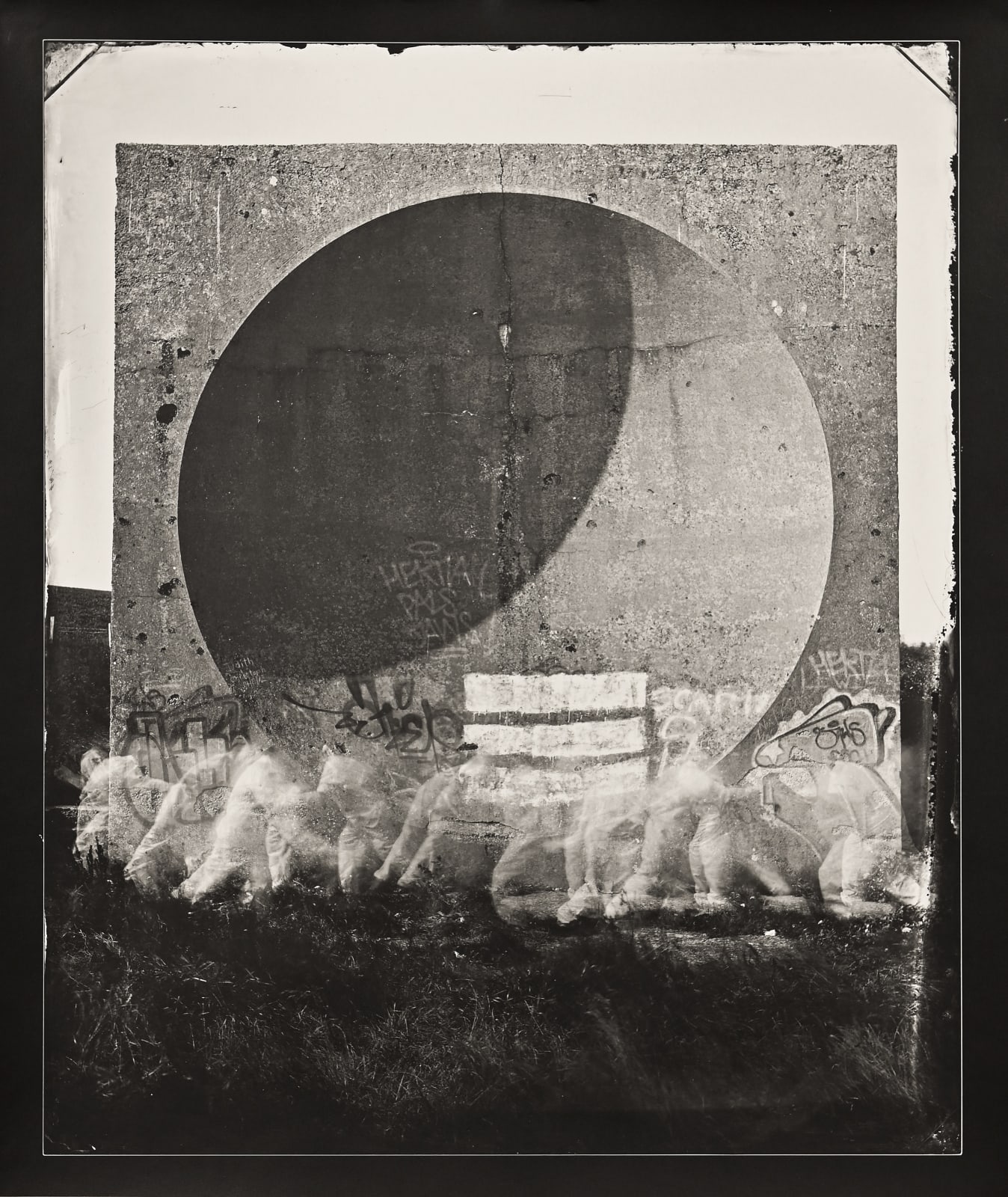Sebastian Edge British, b. 1981
Sound Mirror, 2012
Silver Gelatine contact print
Silver Gelatine contact print
Edition of 7 plus 2 AP
Hand signed by the artist
Copyright The Artist
Sebastian Edge has always enjoyed the playfulness of the collodion process, and the cumbersome complexity of his 'Hurricane Camera', hand-built with wood salvaged from fallen trees after the great storm...
Sebastian Edge has always enjoyed the playfulness of the collodion process, and the cumbersome complexity of his "Hurricane Camera", hand-built with wood salvaged from fallen trees after the great storm of 1987. Being so large the camera always attracted much attention especially at the festivals and events where the artist would photograph willing subjects.
One such individual was a band named "The Arthur Brothers" whom he worked with over a few years, producing potential album covers.
"They would re-amp or play in echo chambers or concrete stairwells to add depth and resonance to their recordings. It reminded me of the sound mirrors in Kent where I grew up. The sound mirrors were designed and built during the arms race where the prospect of an aircraft being able to make it across the channel during the first world war was on! The mirrors used parabolic to focus sound to a point where a microphone was placed and an operator could hear aircraft engines approaching to give as much time to raise the alarm. The mirrors never really saw active service before Radar was invented. They stand now a monument to a human endeavour to an idea that was tested and realised….. We took my van and all of us piled in and visited a few around the coast. I decided whilst we were in front of one to unpack the hurricane camera, lash it to the edge of the white cliffs and make The brothers march in white overalls."
Although this never became an album cover, the idea has created an extraordinary effect, and the documentation of the process has developed it's own identity. The outcome is relevant even to the subject of sound mirrors, as they too never come to be a functional object - yet they remain as a piece of art themselves. "The poetry it creates seems to come from somewhere deeper in me than my technical exterior.. I feel the hurricane camera will always be in my heart.. my head in the constant playfulness of the understanding of photography and its mechanisation.”
One such individual was a band named "The Arthur Brothers" whom he worked with over a few years, producing potential album covers.
"They would re-amp or play in echo chambers or concrete stairwells to add depth and resonance to their recordings. It reminded me of the sound mirrors in Kent where I grew up. The sound mirrors were designed and built during the arms race where the prospect of an aircraft being able to make it across the channel during the first world war was on! The mirrors used parabolic to focus sound to a point where a microphone was placed and an operator could hear aircraft engines approaching to give as much time to raise the alarm. The mirrors never really saw active service before Radar was invented. They stand now a monument to a human endeavour to an idea that was tested and realised….. We took my van and all of us piled in and visited a few around the coast. I decided whilst we were in front of one to unpack the hurricane camera, lash it to the edge of the white cliffs and make The brothers march in white overalls."
Although this never became an album cover, the idea has created an extraordinary effect, and the documentation of the process has developed it's own identity. The outcome is relevant even to the subject of sound mirrors, as they too never come to be a functional object - yet they remain as a piece of art themselves. "The poetry it creates seems to come from somewhere deeper in me than my technical exterior.. I feel the hurricane camera will always be in my heart.. my head in the constant playfulness of the understanding of photography and its mechanisation.”
